Charlotte Fire Deploys to the Coast Ahead of Hurricane Erin Threat
Published on August 19, 2025
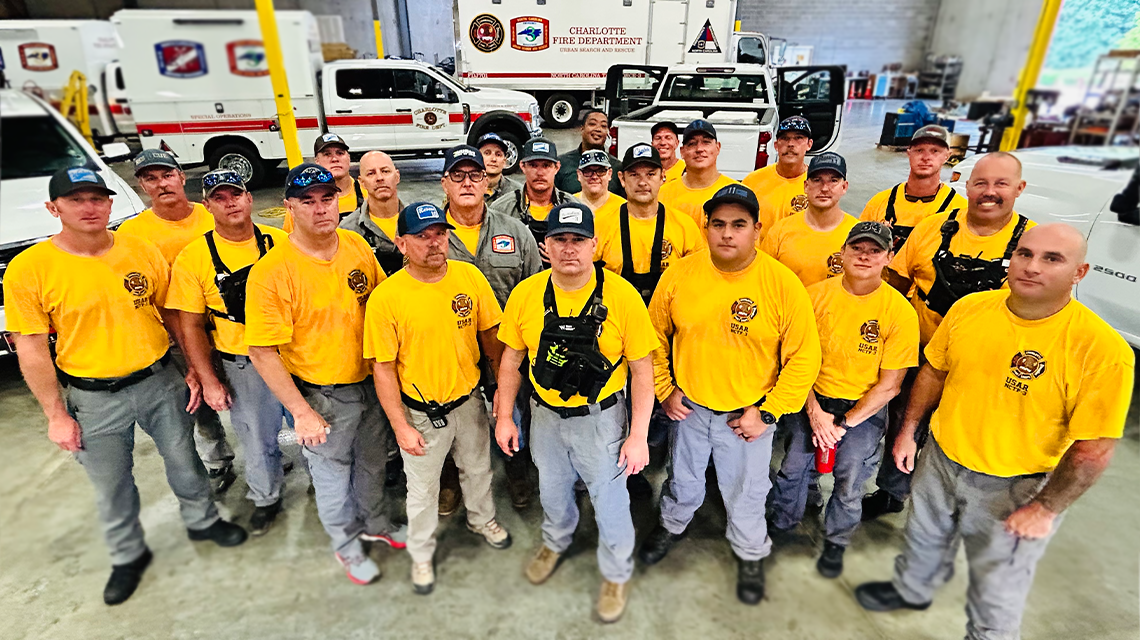
Members of Charlotte Fire’s Task Force 3 gather for a final photo before deploying to eastern North Carolina ahead of Hurricane Erin.
Crews stand ready to protect the state amid storm’s uncertain path
When the call came in just before 5 p.m. Tuesday, members of Charlotte Fire’s North Carolina Task Force 3 (NCTF-3) knew what it meant. By dawn the next day, they would be leaving their families behind and heading east to Edenton, North Carolina, as Hurricane Erin looms offshore.
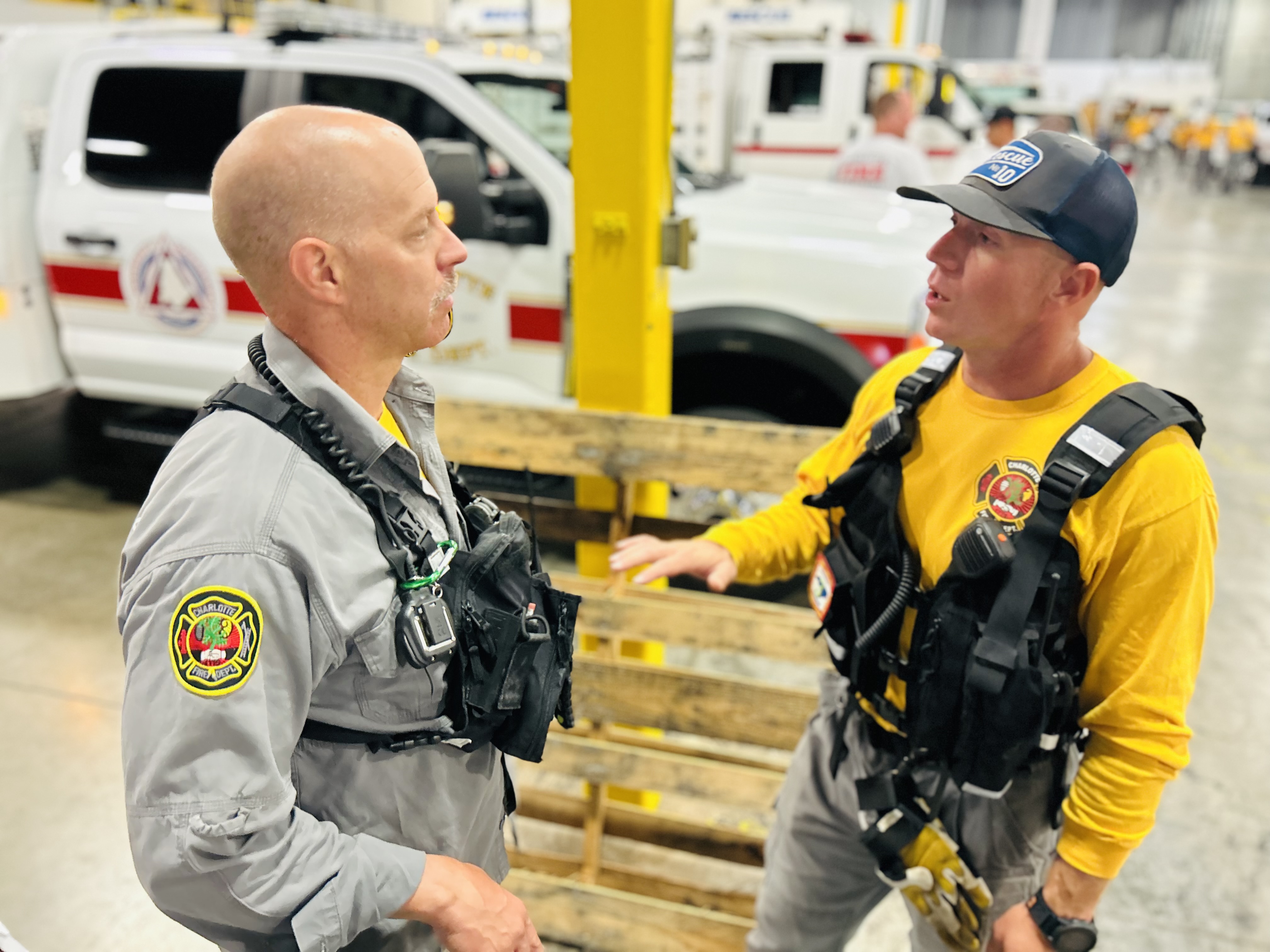
Capt. DePoto and Capt. Bell review logistics ahead of Task Force 3’s departure. Each deployment is a collective effort built on trust and training.
It is a familiar scenario for this highly trained team, activated again as part of North Carolina’s coordinated strategy to preposition resources in advance of significant weather events. Even though the path and impact of Hurricane Erin remains uncertain, Charlotte Fire is on the move and ready to serve.
“We were notified at approximately 4:45 yesterday afternoon,” said Battalion Chief Josh Johnson, who leads the NCTF-3 deployment. “This is a pre-deployment ahead of potential impacts from Hurricane Erin. The state is strategically pushing resources east to areas where they could be needed most.”

Charlotte Fire’s Task Force 3 members work together to load critical equipment ahead of their Hurricane Erin deployment. The coordinated effort reflected their commitment to readiness and rapid response.
By 6:30 a.m. Wednesday, Charlotte Fire personnel reported to the city’s logistics warehouse. Thirty minutes later, they were on the road, a fully mobilized, all-hazards response team.
“We have refined the process to where we can be out the door in an hour,” Johnson said. “From the moment they report to wheels rolling.”
Their destination is a staging area in Edenton, close enough to vulnerable communities yet flexible enough for repositioning. If Hurricane Erin brings heavy rain or storm surge to any part of eastern North Carolina, Charlotte’s team can shift to flood rescues, evacuations, or even structural response if wind damage becomes severe.
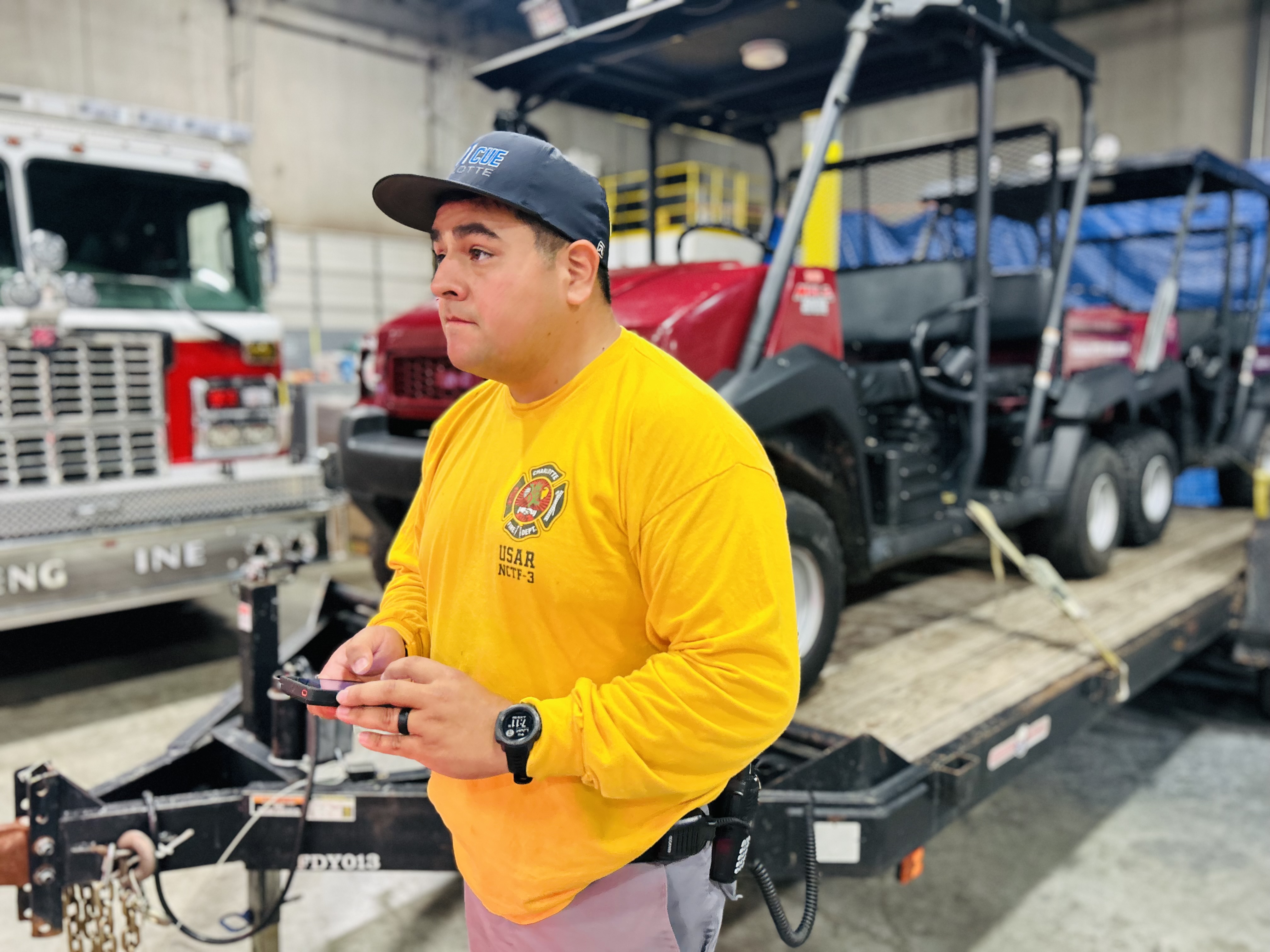
Firefighter Muniz checks final gear lists as crews load equipment for potential swift water rescue operations following Hurricane Erin.
NCTF-3 is one of the most versatile resources in the state’s emergency response system, equipped to respond to swift water rescues, structural collapses, and widespread disasters. Their primary mission for Erin is anticipated to center on flood emergencies, rescuing stranded motorists, assisting families trapped in rising water, and helping stabilize storm-damaged communities.
“You always hear ‘turn around, don’t drown,’ but we know people still drive into floodwaters,” Johnson said. “If someone is trapped in a vehicle, or if neighborhoods flood and folks could not or did not evacuate, that is when our team moves in.”

Specialized water rescue equipment from Charlotte Fire’s NC Task Force 3 stands ready for deployment. From inflatable boats to essential gear, every item is staged with precision to respond to flooding and swiftwater emergencies during Hurricane Erin.
They are also prepared to access barrier islands if tidal surge cuts them off from the mainland. It is all part of being an all-hazards team, trained to respond to anything, anywhere.
“Whether it is water rescues, structural issues, or logistical needs, we are trained and ready,” Johnson added.

Firefighter Watts prepares Charlotte Fire’s drone equipment before departure, ensuring the team is ready for aerial support in flood-affected areas.
While Hurricane Erin’s impact remains to be seen, Charlotte Fire’s swift action reflects years of preparation and lessons learned. The department has built strong deployment protocols following past storms including Hurricane Helene, which struck Western North Carolina more than a year ago.

Charlotte Fire USAR team gathers for a final briefing before deploying to assist with Hurricane Erin recovery efforts.
“Every deployment teaches us something new,” Johnson said. “Helene taught us about the pace and complexity of response in the mountains, fast-moving water, narrow access roads, rapidly changing conditions.”
But deployments to the coast bring different challenges.
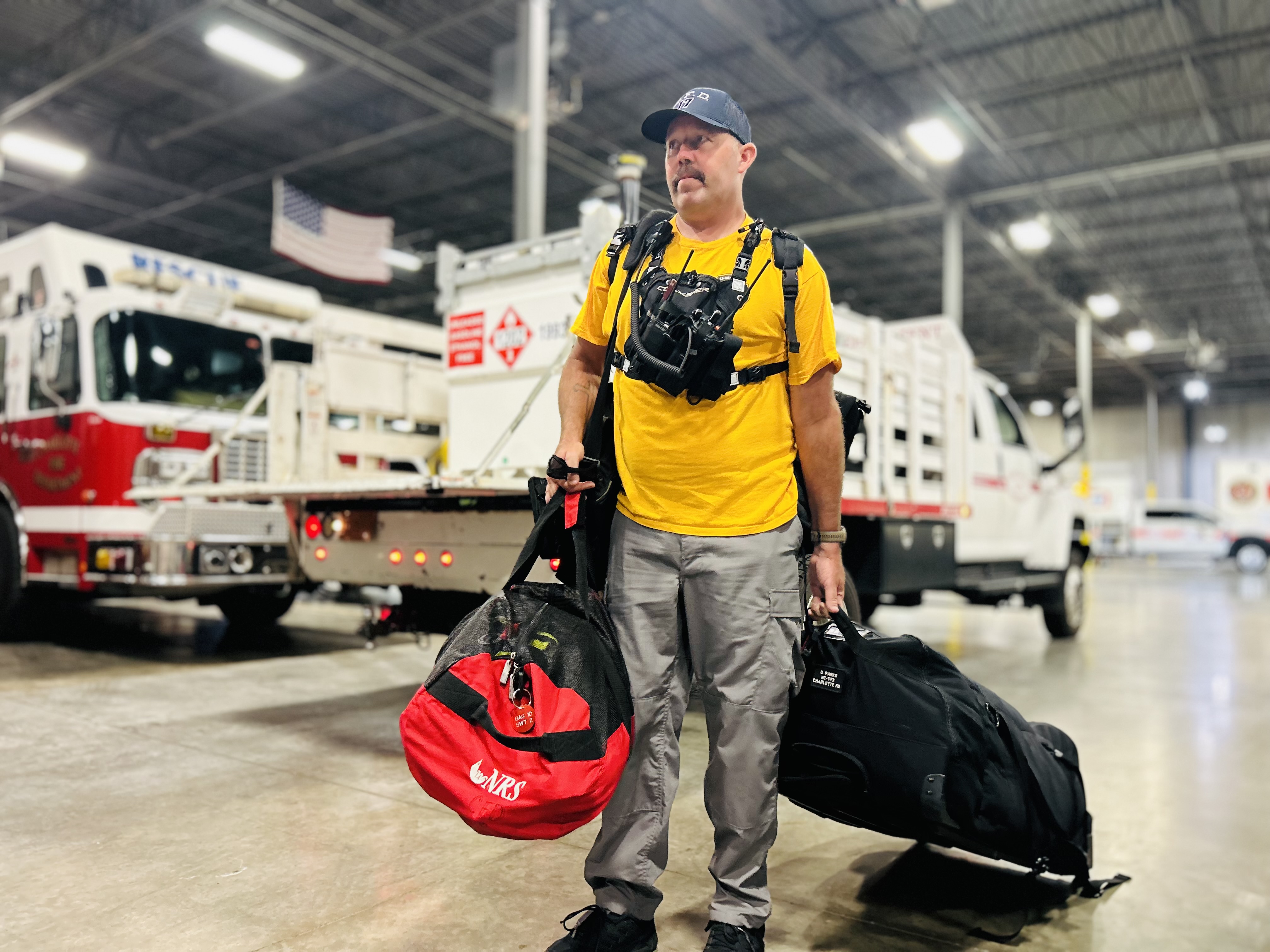
Battalion Chief Parks stands ready with deployment gear as the team prepares for possible swift water rescues and disaster response.
“In the west, mountain rivers rise quickly and are confined. Down east, the flooding is often wide and flat. It spreads out, sometimes catches people off guard, and affects entire regions. You need different strategies, different resource allocations.”
Charlotte Fire has made significant logistical improvements over the last year, including what they pack and how quickly they launch.

Equipment is carefully loaded by Charlotte Fire personnel ahead of the deployment to eastern North Carolina. Every tool has a mission.
“We have gotten to where our team can report and be gone in an hour,” Johnson said. “That is a testament to our preparation and our people.”
These deployments come with personal cost. Team members often leave on short notice and remain deployed for up to 14 days. It is a demanding sacrifice, made by both firefighters and their families.

Battalion Chief Monteith coordinates final communications as Charlotte Fire Task Force 3 prepares to depart for Edenton.
“There is a moment when the call comes in and you know this is it,” Johnson said. “You might be gone for two days, or fourteen. But when the state needs us, we go.”
That sacrifice does not fall solely on the responders.
“We always say it is not just the members who serve. Their families serve too. Their support is what makes this possible.”

Capt. Rodgers reflects on the mission ahead as Charlotte Fire members prepare to support flood and rescue efforts across the state.
Charlotte Fire’s special operations teams train year-round for moments like this, mastering rescue techniques, refining communication systems, and ensuring gear is deployment-ready. It is a demanding commitment, but one every team member embraces.
“There is no finer group of individuals,” Johnson said. “They step up, without hesitation, every time.”
For some firefighters, this kind of statewide activation may happen once or twice during their careers. Others have deployed more frequently. Either way, they all know what it means to serve.

Capt. Hodnett places the North Carolina Task Force 3 insignia on a response vehicle before deployment to Edenton.
“This could be a once-in-a-career kind of storm. They know that. And they are proud to represent the city in this kind of effort.”
Fire Chief Johnson praised the team’s dedication and readiness, saying the department is proud to serve not just the Queen City but the entire state.
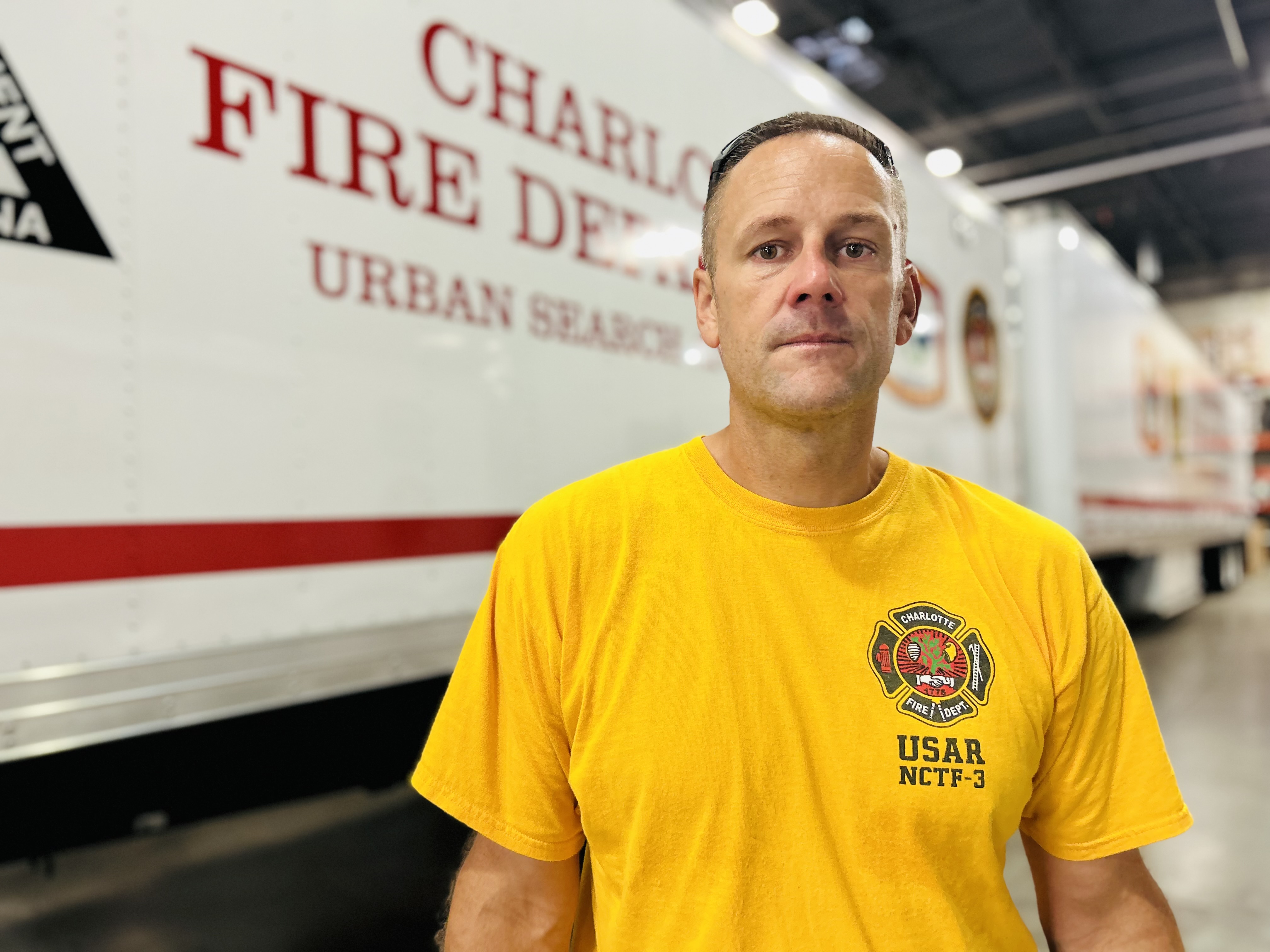
Chief Josh Johnson leads Charlotte Fire’s deployment operations, underscoring the department’s readiness to serve the state.
Charlotte Fire’s deployment is part of a larger state and regional effort to preposition resources and avoid delays once the storm makes landfall. Though it is too early to know the storm’s full impact, Johnson said Charlotte’s presence will help ensure communities get the help they need quickly.
“It is about being ready. The citizens of this state depend on us. We will not let them down.”
As the storm approaches, the work of NCTF-3 continues quietly, selflessly, and with the full force of Charlotte Fire’s values behind them.

Charlotte Fire personnel bow in prayer before deployment, unified in purpose and grounded in service as they head east in support of those in need.